The Detroit News' top 20 players in Michigan men's basketball history
 James Hawkins
James HawkinsThe Detroit News
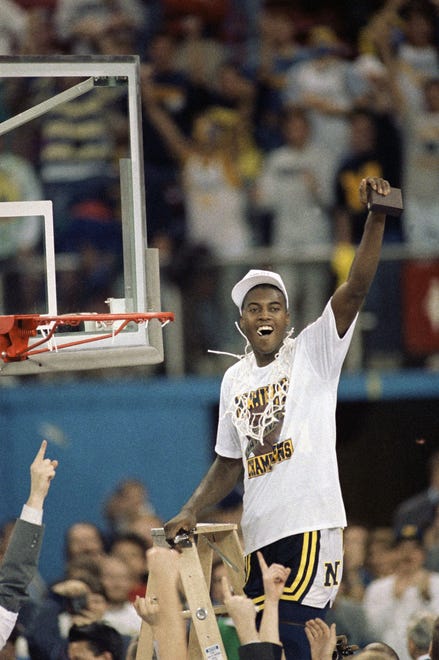
Go through the gallery to view the top 20 Michigan basketball players, compiled by James Hawkins of The Detroit News. The list includes Glen Rice, who led the Wolverines to the 1989 national title.
David Longstreath, Associated Press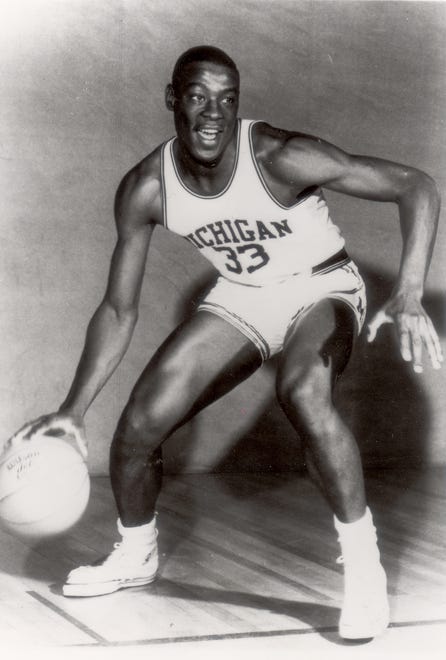
1. Cazzie Russell (1963-66): The program’s only three-time All-American lifted the Wolverines to national prominence and left a lasting imprint. Russell, a 6-foot-5 guard, averaged a program-best 27.1 points per game over his three-year career (freshmen weren’t eligible to play on varsity teams until 1972) and led the Wolverines to three consecutive Big Ten titles as well as back-to-back Final Four appearances in 1964 and 1965. In 1966, he averaged 30.8 points and 8.4 rebounds en route to being named the national player of the year. His No. 33 is retired by the program and Crisler Arena, which opened in 1967, is affectionally referred to as "The House that Cazzie Built.
Detroit News Photo Archive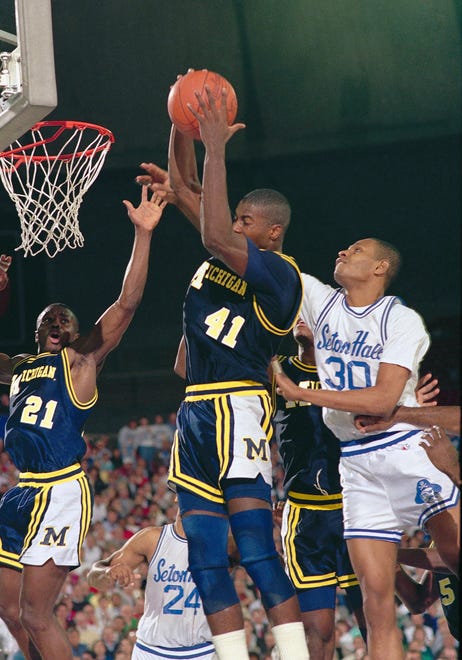
2. Glen Rice (1985-89): The program’s all-time leading scorer elevated his play to a different level his final two years and capped his career with arguably one of the greatest seasons ever. As a senior, the Flint native averaged 25.6 points on 57.7% shooting and led Michigan to its lone national title in 1989 with a record-breaking NCAA Tournament performance. The 6-foot-7 forward’s 184 points scored in the Big Dance hasn’t been topped and he continues to hold the program’s single-season marks for scoring (949 points), field goals made (363) and 3-point shooting (51.6% in 1988-89).
AP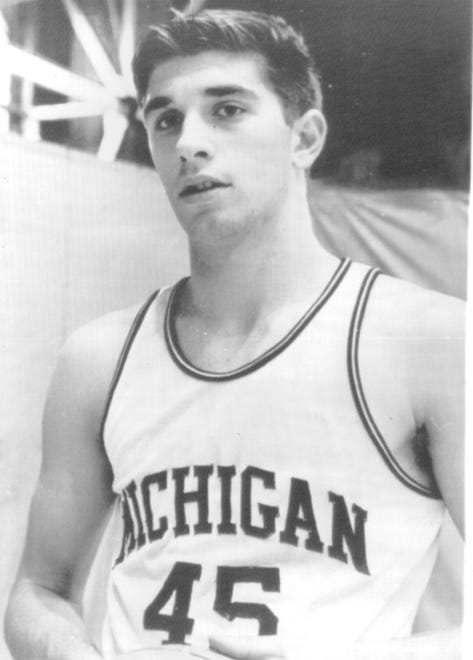
3. Rudy Tomjanovich (1967-70): The Hamtramck star followed in the footsteps of Russell and carved out his own legendary career. Tomjanovich, a 6-foot-8 forward, was the ultimate stat-sheet stuffer and holds single-game records at Crisler Arena for scoring (48 points), made field goals (21) and rebounds (27). While he never played in an NCAA Tournament game, he averaged a double-double in each of his three seasons, including a career-best 30.1 points and 15.5 rebounds in 1969-70, and is the program’s all-time leader in rebounds (1,039).
Detroit News Photo Archive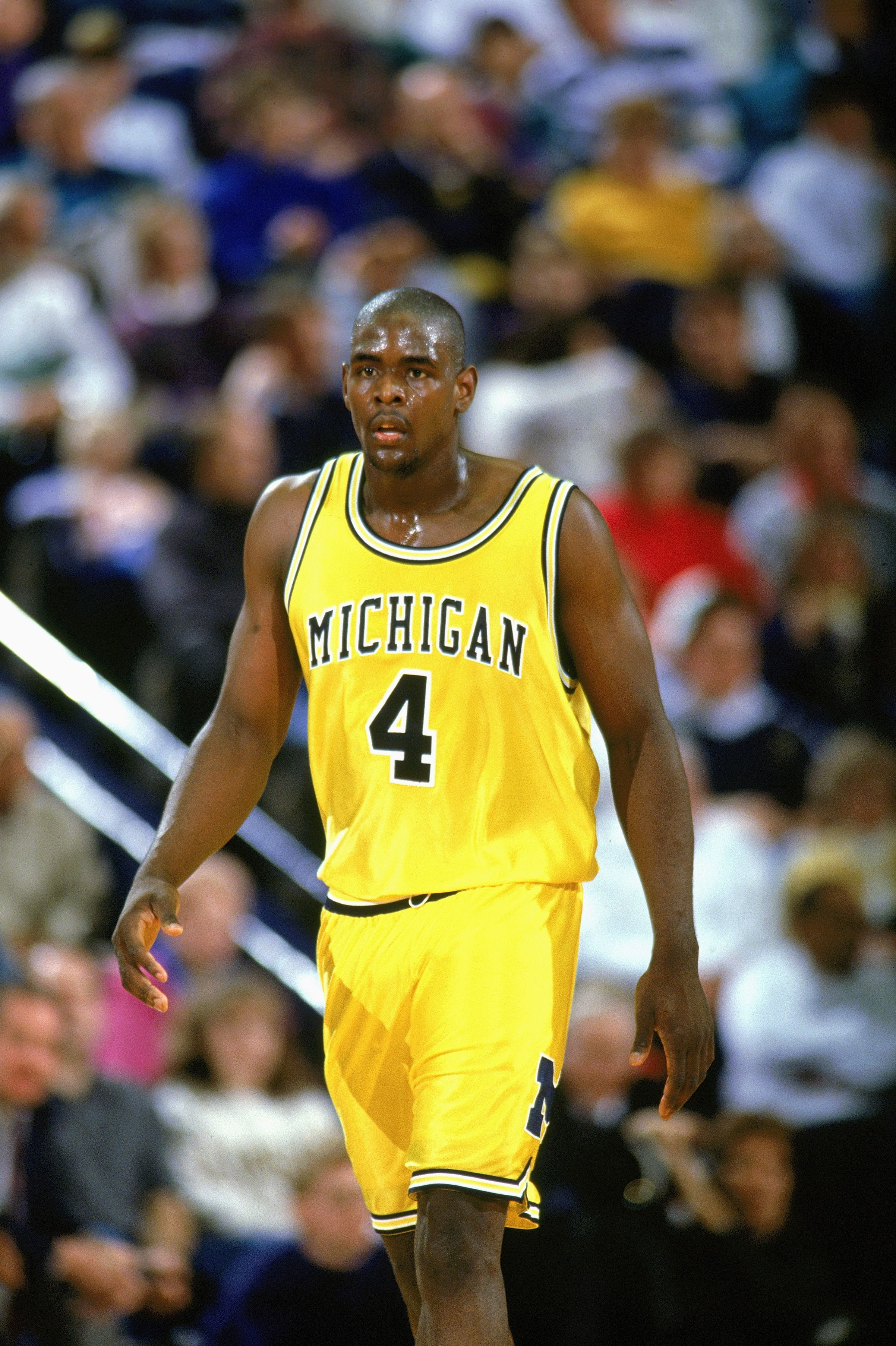
4. Chris Webber (1991-93): The centerpiece of the famed "Fab Five" recruiting class, Webber made a mark on the program — both good and bad. The 6-foot-9 forward powered Michigan to back-to-back national title game appearances in 1992 and 1993 and averaged 19.2 points, 10.1 rebounds and 2.5 blocks as a sophomore, becoming one of five Wolverines to earn consensus All-American first-team honors. He would go on to become the top pick in 1993 NBA Draft, but his involvement in the Ed Martin scandal led to a 10-year disassociation with the program that ended in 2013.
Duane Burleson, Getty Images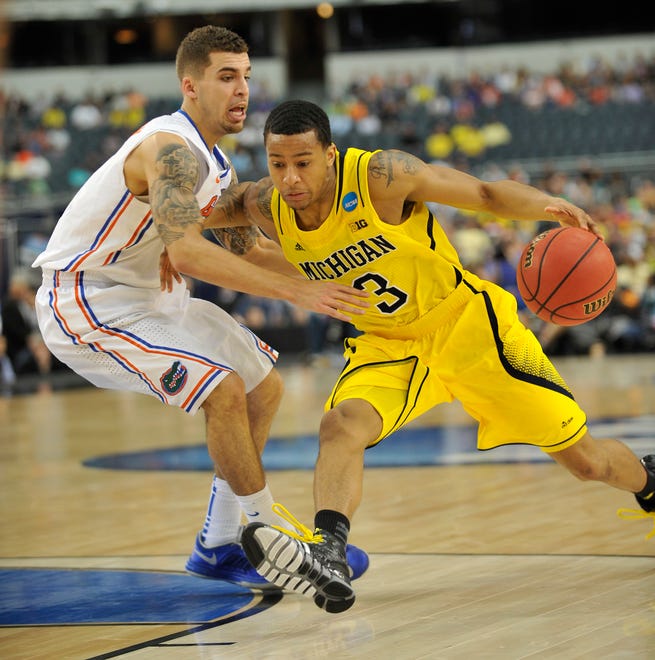
5. Trey Burke (2011-13): The 6-foot guard helped revive the program during his two years under former coach John Beilein. Burke led Michigan to a share of its first Big Ten regular-season title in 26 seasons as a freshman before emerging as one of the top talents in the nation. As a sophomore, he averaged 18.6 points and 6.7 assists per game, dished out a single-season program record 260 assists and became the first Wolverine since Cazzie Russell to be recognized as the consensus national player of the year. And, of course, he’ll always be remembered for his deep 3-pointer in the Sweet 16 against Kansas during Michigan’s march to 2013 national title game.
John T. Greilick, Detroit News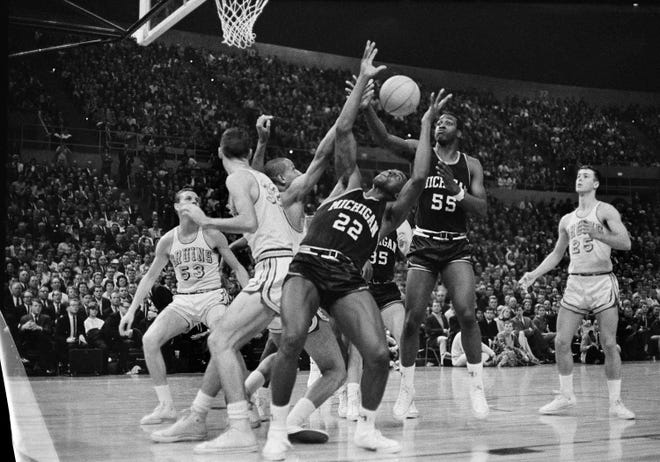
6. Bill Buntin (1962-65): The Detroit native and two-time All-American was a ferocious rebounder and inside force who teamed with Cazzie Russell to complete one of the most formidable duos in program history. Buntin, a 6-foot-7 big man, averaged 21.8 points and 13.1 rebounds over his three-year career and helped Michigan make its first trip to the national title game in 1965. He’s one of two Wolverines to collect over 1,700 points and 1,000 rebounds, and his 58 double-doubles in 79 career games is the most of any Michigan player.
Associated Press7. Gary Grant (1984-88): "The General" was one of the top two-way guards in college basketball during his time in Ann Arbor. He was named the Big Ten freshman of the year in 1985 when he helped Michigan capture the Big Ten title, earned the conference’s player of year honors in 1988, and received All-American honors as a junior and senior when he averaged 22.4 and 21.1 points, respectively. A four-year starter, Grant’s teams all notched at least 20 wins and reached the NCAA Tournament. He’s one of five Wolverines to top 2,000 points and he leads the program in assists (731) and steals (300) by a wide margin.
Detroit News Photo Archive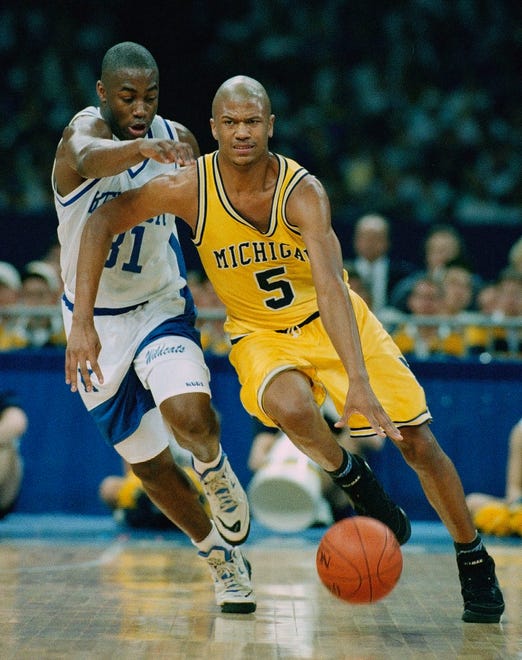
8. Jalen Rose (1991-94): A member of the "Fab Five," the Detroit native’s toughness, vision, versatility and scoring ability helped fuel deep NCAA Tournament runs each of his three years at Michigan. Rose, a 6-foot-8 guard, averaged more than 15 points every season, highlighted by a career-high 19.9 points as a junior. He set the program’s freshman scoring record with 597 points and is one of six Wolverines to record three consecutive 500-point seasons. He finished his career as a two-time All-American selection and as one of two Michigan players to tally 1,500 points, 400 rebounds and 400 assists.
Associated Press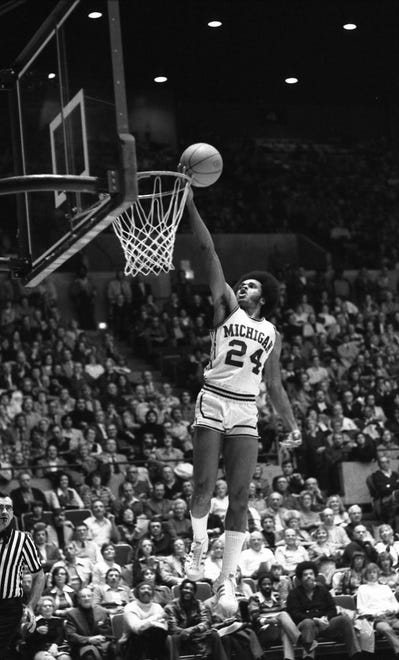
9. Rickey Green (1975-77): Green spent two years playing junior college ball in Indiana before bursting onto the scene at Michigan. The 6-foot guard guided the Wolverines to their second NCAA title game appearance in 1976, where they lost to an undefeated Indiana Hoosiers team, and to a Big Ten championship in 1977. He averaged 19.7 points per game during his two years in Ann Arbor, which ranks eighth in program history, and is one of 12 Michigan players to earn All-American honors in multiple seasons.
Bentley Historical Library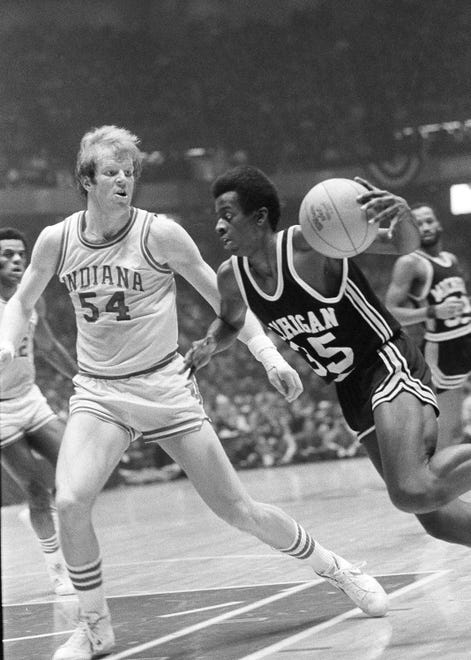
10. Phil Hubbard (1975-79): Hubbard was a dominant post player who racked up 1,455 points and 979 rebounds over his career, but those totals would’ve been more impressive if not for a knee injury that sidelined him the entire 1977-78 season. Before that, he helped the Wolverines reach the national title game as a freshman in 1976 and followed that with an All-American sophomore campaign where Michigan won the outright Big Ten title, returned to the Elite Eight and he recorded a single-season program record 24 double-doubles. Hubbard’s No. 35 is one of five honored jerseys, along with Bill Buntin’s No. 22, Cazzie Russell’s No. 33, Glen Rice’s No. 41 and Rudy Tomjanovich’s No. 45.
AP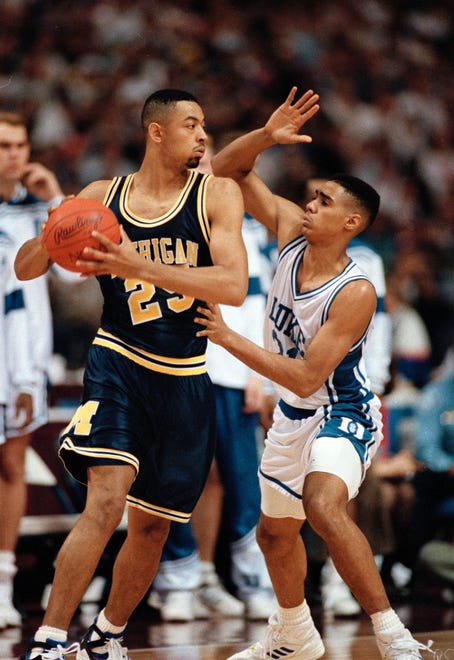
11. Juwan Howard (1991-94): A stabilizing and steady force during the "Fab Five" era, Howard’s numbers improved throughout his three-year career. The 6-foot-9 big man averaged a career-high 20.8 points and 8.9 rebounds per game as a junior and was at his best during the NCAA Tournament when he averaged 29 points and 12.7 rebounds to propel the Wolverines to their third straight Elite Eight. One of six Wolverines to record at least 1,500 points and 700 rebounds, he enjoyed a long and successful NBA career before returning to coach his alma mater.
AP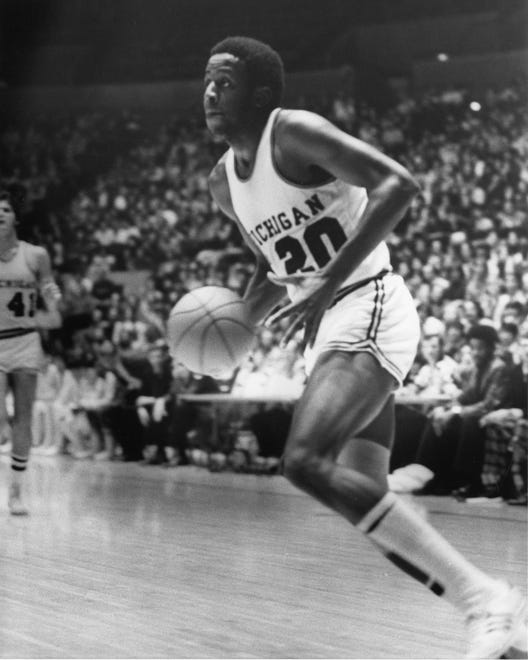
12. Campy Russell (1972-74): The Pontiac product arrived as one of the top prep players in the nation and he lived up to the billing. Russell, a 6-foot-8 forward, averaged 18.4 points and 9.6 rebounds his first season and 23.7 points and 11.1 rebounds in his second and final year. As a sophomore, he led the Wolverines to a piece of the Big Ten title and to the Elite Eight while capturing the conference’s scoring title and being named an All-American. His career averages of 21.1 points and 10.4 rebounds both rank sixth in program history.
Bentley Historical Library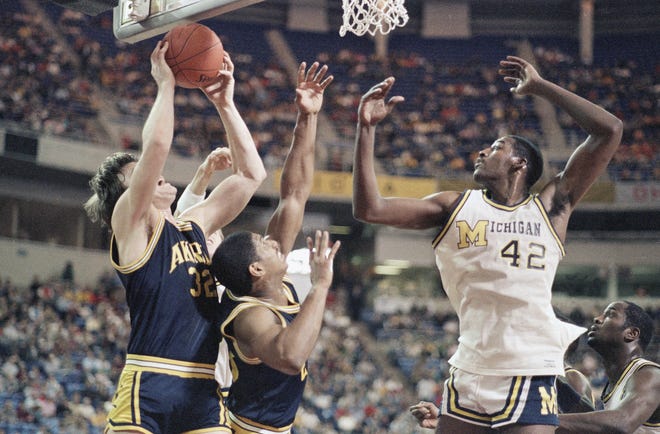
13. Roy Tarpley (1982-86): The Detroit standout was a key piece on Michigan’s back-to-back Big Ten title teams in 1985 and 1986. Tarpley, a 6-foot-11 big man, earned All-America recognition both those seasons and was the conference’s player of the year in 1985, when he averaged a career-best 19 points and 10.4 rebounds per game. He was an enormous talent who led his teams in scoring, rebounding and blocked shots his final three seasons. The two-time All-American also holds the program records for blocks in a game (10), season (97) and career (251).
Jim Mone, Associated Press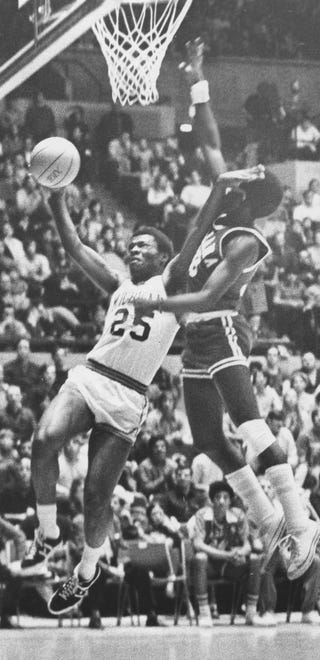
14. Henry Wilmore (1970-73): Only four Wolverines have averaged at least 25 points in a season — Cazzie Russell (twice), Rudy Tomjanovich (twice), Glen Rice (once) and Wilmore, who did so in 1970-71. The 6-foot-3 guard averaged 25 points as a sophomore, 24 points as a junior and 21.8 points as a senior, and his career scoring average of 23.6 points ranks third in program history. Despite his scoring prowess and two All-American nods, none of his Michigan teams reached the NCAA Tournament.
Detroit News Photo Archive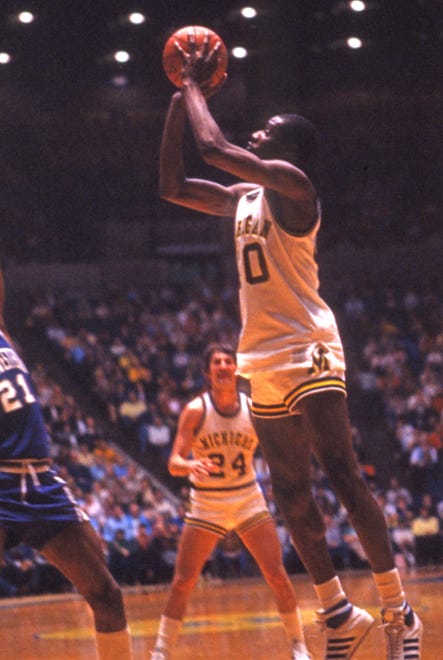
15. Mike McGee (1977-81): McGee is the definition of a scoring machine. The 6-foot-5 guard ranks first in program history with 1,010 made field goals and second with 2,439 points, three points behind Glen Rice’s top mark. He became the first Wolverine to lead his team in scoring four straight years and is the only Michigan player to record four 500-point seasons. He scored in double figures in 108 of 114 games, but his teams never topped 20 wins and never made the Big Dance.
Bentley Historical Library16. Rumeal Robinson (1987-90): Robinson is best remembered for his two free throws that helped seal Michigan’s overtime win against Seton Hall in the 1989 national title game. However, that moment overshadows the productive career he had. The 6-foot-2 guard averaged 14.5 points and 5.8 assists during his three years in Ann Arbor and was a consensus second-team All-American in 1990, when he averaged 19.2 points and 6.1 assists. His 575 assists and 150 steals rank third and seventh, respectively, among all Michigan players.
Detroit News Photo Archive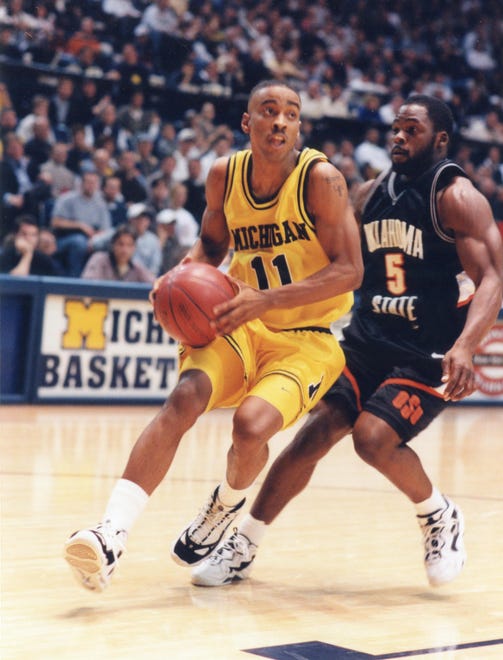
17. Louis Bullock (1995-99): Bullock established himself as a potent scorer and one of the best 3-point shooters to play at Michigan. He averaged 16.8 points and 84 made deep balls per season over the course of his four-year career, which featured two trips to the NCAA Tournament and the inaugural Big Ten tournament title in 1998. Bullock, a 6-foot-2 guard, would rank third in program history in scoring (2,224 points) and first in starts (129), made 3-pointers (339), 3-point attempts (802) and free-throw percentage (86.2%). However, he fell victim to the Ed Martin scandal and his accomplishments have been wiped from the record books.
Bentley Historical Library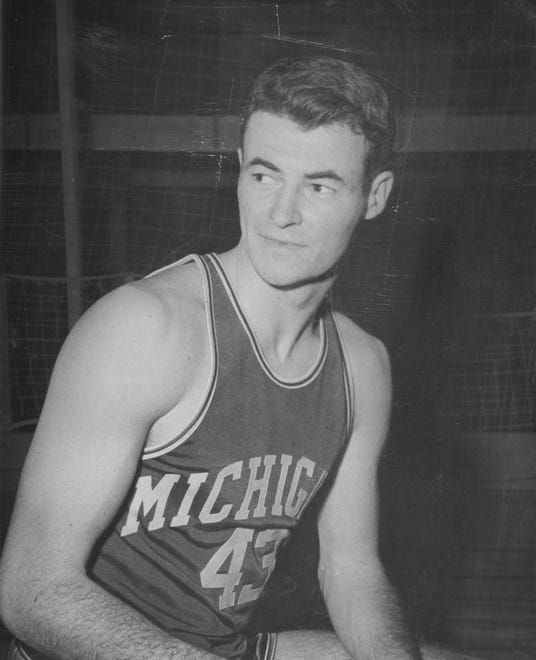
18. John Tidwell (1958-61): Tidwell, a guard, scored 22 points in his Michigan debut and that set the tone for his time in Ann Arbor. He broke the school’s scoring record at the time in a single game (41 points) and in a single season (520 points) during his junior year, when he averaged 21.6 points. While both of those marks didn’t last long thanks to Cazzie Russell and Bill Buntin, Tidwell still averaged 20.1 points per game for his career and is one of seven Wolverines to accomplish such a feat.
Detroit News Photo Archive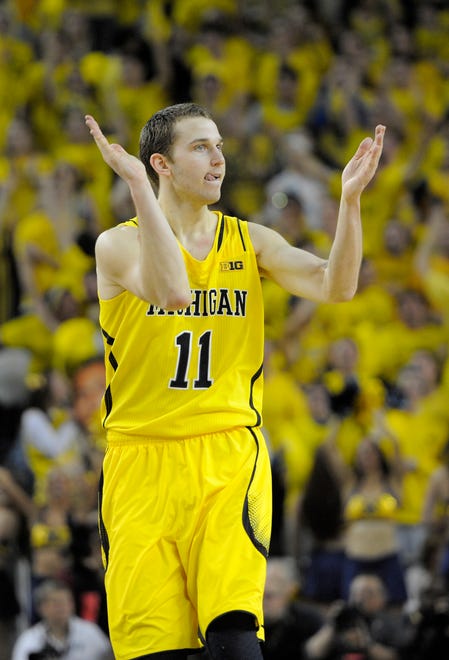
19. Nik Stauskas (2012-14): The Canadian sharpshooter was named the Big Ten player of the year and an All-American as a sophomore, when he averaged 17.5 points while leading the Wolverines to their first outright regular-season conference title in 28 seasons and to their second straight Elite Eight. His 44.1% 3-point shooting ranks fifth among all Michigan players and his 80 made 3-pointers in 2012-13 are the most for any freshman. Stauskas, a 6-foot-6 wing, was also just eighth sophomore in program history to reach 1,000 career points before he left early for the NBA.
David Guralnick, Detroit News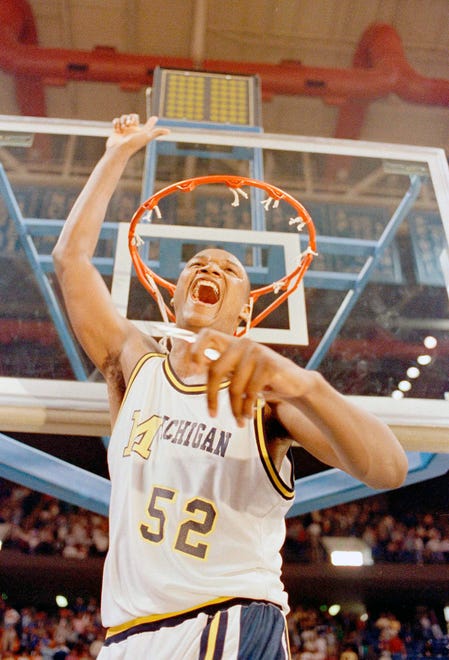
20. Terry Mills/Loy Vaught (1987-90): The two Michigan natives were key members and double-digit scorers on the Wolverines’ 1989 national title team. But both big men broke out and earned All-American recognition the following season, when Mills (pictured here) averaged 18.1 points and eight rebounds and Vaught (next photo) tallied 15.5 points and 11.2 rebounds. The duo each recorded over 1,400 points and 600 rebounds and shot at least 56% from the field during their careers.
AP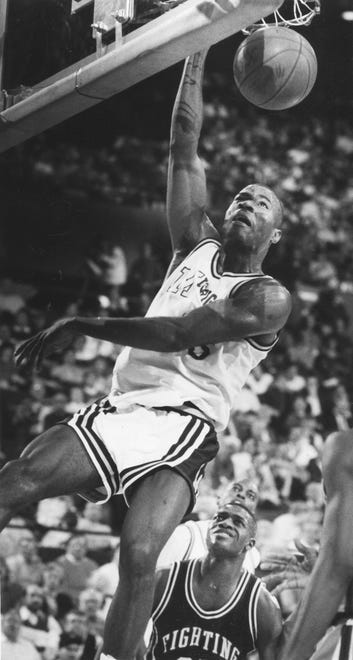
Loy Vaught
Detroit News Photo Archive